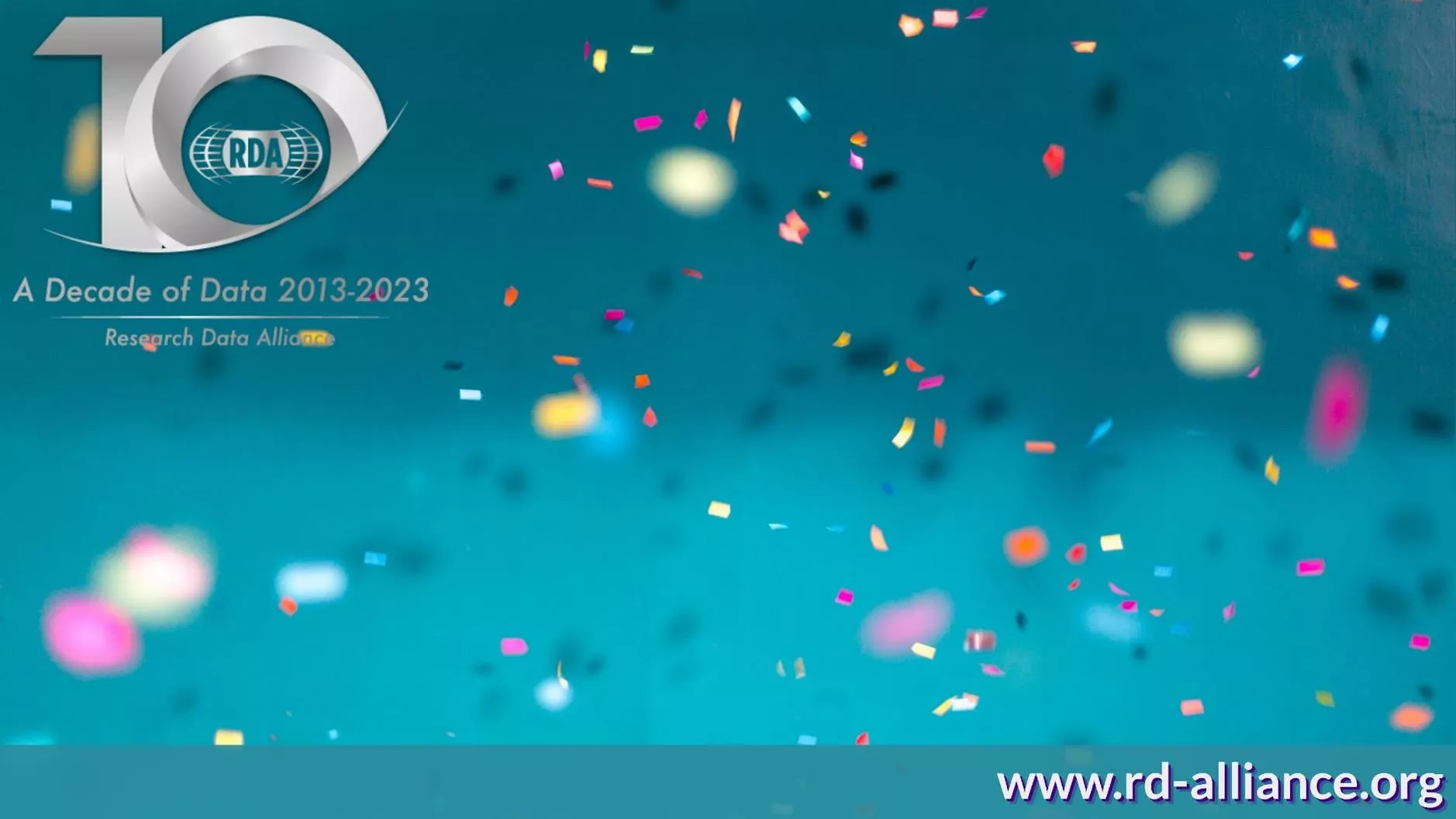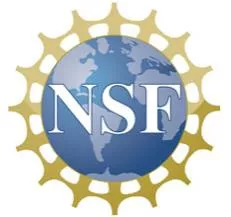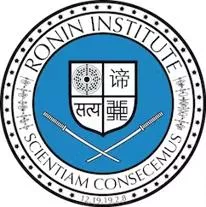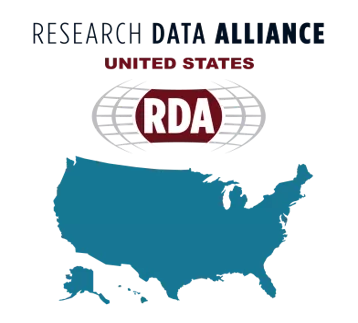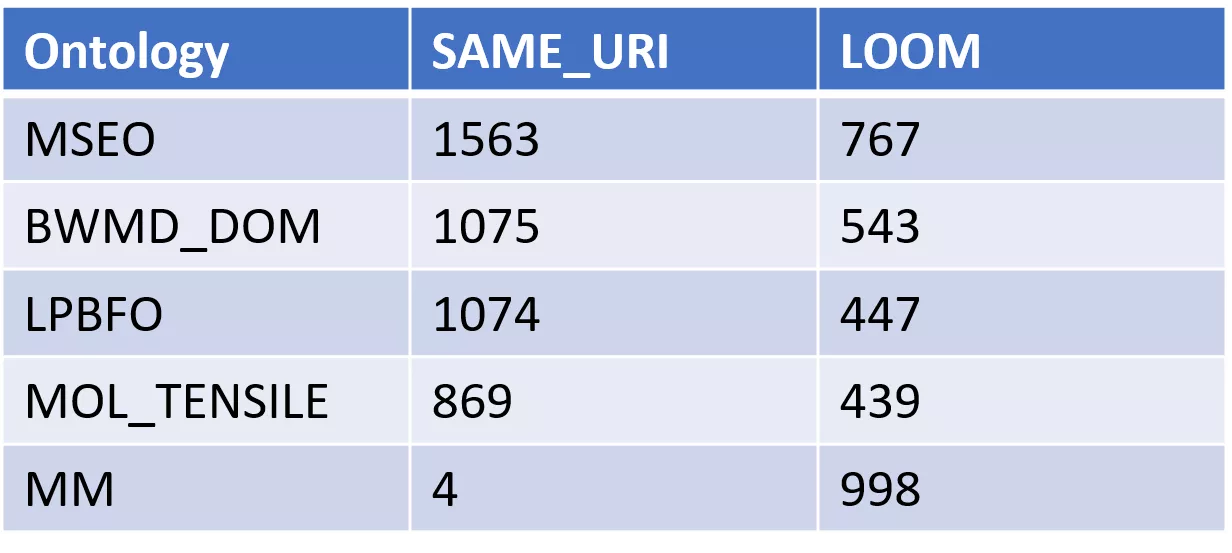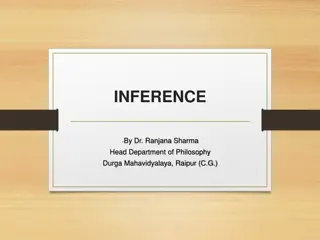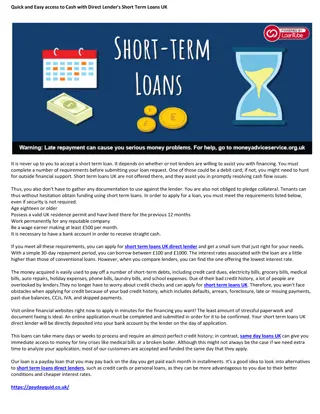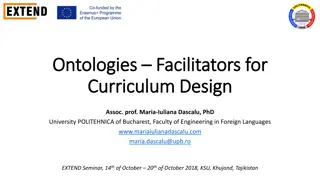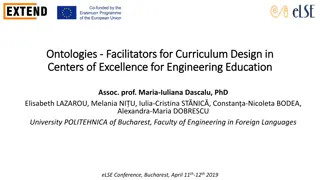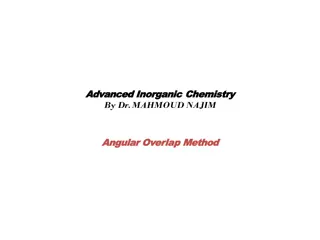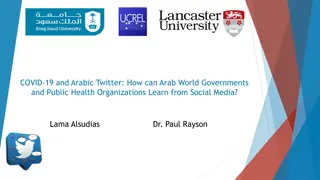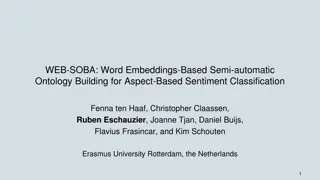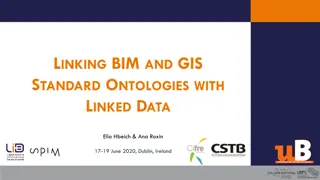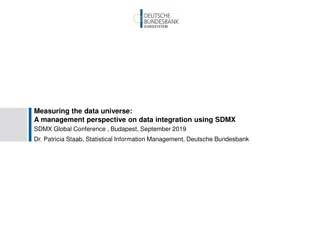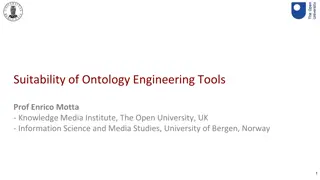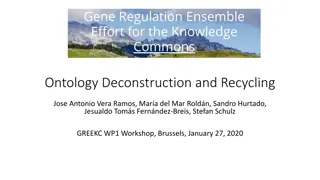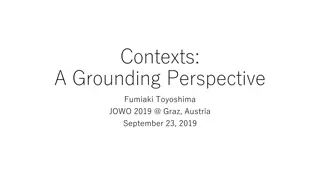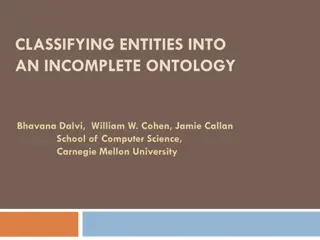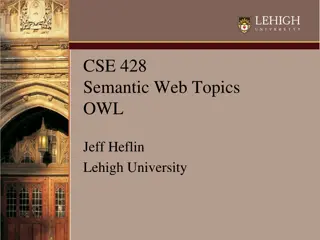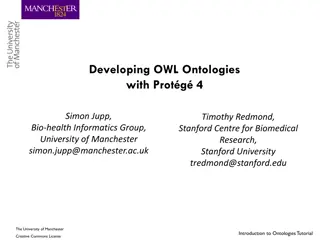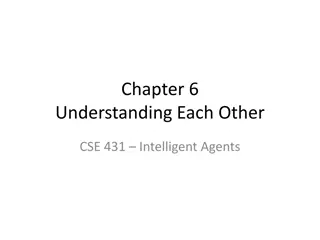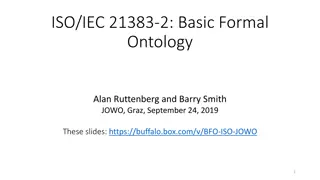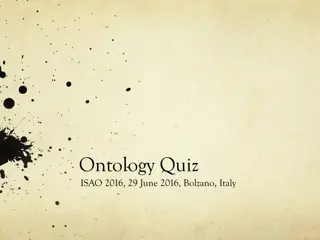Term Overlap Among Matportal Ontologies
The study focuses on term overlap among 5 Matportal ontologies, assessing interoperability and semantic ambiguity. Results show high rates of URI matches between specific ontologies, with discussions on the implications and potential solutions for enhancing interoperability.
Download Presentation

Please find below an Image/Link to download the presentation.
The content on the website is provided AS IS for your information and personal use only. It may not be sold, licensed, or shared on other websites without obtaining consent from the author.If you encounter any issues during the download, it is possible that the publisher has removed the file from their server.
You are allowed to download the files provided on this website for personal or commercial use, subject to the condition that they are used lawfully. All files are the property of their respective owners.
The content on the website is provided AS IS for your information and personal use only. It may not be sold, licensed, or shared on other websites without obtaining consent from the author.
E N D
Presentation Transcript
Along the Border: Term Overlap Among 5 Matportal Ontologies Scott McClellan, Yuan An, Jane Greenberg, Xintong Zhao Metadata Research Center, Drexel University NSF-OAC 2118201 NSF-OAC 1934649 IMLS/RE-246450-OLS-20
Background and Method Current focus on FAIR data standards Term overlap directly relates to Interoperability aspect Research goals of the study Measured the degree of term overlap for a sample of MS ontologies from MatPortal Examined the types of semantic ambiguity across a subsection of MatPortal ontologies Ranked all ontologies and vocabularies using MatPortal matching tools URI matching (SAME_URI) Term matching (LOOM) Ontology SAME_URI LOOM MSEO 1563 767 BWMD_DOM 1075 543 LPBFO 1074 447 MOL_TENSILE 869 439 MM 4 998 Materials Science and Engineering Ontology (MSEO) BWMD Domain Ontology (BWMD_DOM) Laser Powder Based Fusion Ontology (LPBFO) Molecular Tensile Ontology (MOL_TENSILE) MaterialsMine Ontology (MM)
Results Highest rates of URI matches occurred between ontologies connected to Fraunhofer (BWMD_DOM, LPBFO, MOL_TENSILE) Remarkably all three shared 347 URI matches Second highest rate of URI matches occurred due to shared use of Basic Formal Ontology Terminological matches were more evenly distributed between pairs of ontologies Among LOOM matches, abstract terms predominated
Ontology Match Data URI Matches among Sample LOOM Matches among Sample BWMD_ DOM LPBFO MSEO MM MOL_TE NSILE BWMD_ DOM LPBFO MSEO MM MOL_TENS ILE BWMD_ DOM 347 35 0 347 BWMD_ DOM 17 127 71 6 LPBFO 347 35 0 347 LPBFO 17 126 63 0 MSEO 127 126 112 126 MSEO 35 35 0 35 MM 71 63 112 66 MM 0 0 0 MOL_TE NSILE 6 0 126 66 MOL_TE NSILE 347 347 35 0 Total 221 206 491 312 198 Total 729 729 105 0 729
Discussion Small number of institutions providing backbone ontologies could lead to less interoperability, especially if they are geographically distinct Reliance on upper ontologies such as BFO provide stable support, but over reliance on these can lead to compatibility issues when changing versions Possible solutions for issues with term overlap: Intermediary semantic schema such as Simple Standard for Sharing Ontological Mappings (https://github.com/mapping-commons/sssom) Drexel Metadata Research Center (MRC) initiaitves YAMZ (Yet another Metadata Zoo) (https://yamz.net) HIVE-4-MAT (Helping Interdisciplinary Vocabulary Engineering for Materials Science) https://hive4mat.cci.drexel.edu/index
HIVE-4-Materials Science 21+ontologies YAMZ: YET ANOTHER METADATA ZOO Greenberg, J., Zhao, X., Adair, J., Boone, J., & Hu, X. T. (2021). HIVE-4-MAT: Advancing the ontology infrastructure for materials science. In Metadata and Semantic Research: 14th International Conference, MTSR 2020, Madrid, Spain, December 2 4, 2020, Revised Selected Papers 14 (pp. 297-307). Springer International Publishing. Greenberg, J., McClellan, S., Rauch, C., Zhao, X., Kelly, M., An, Y., ... & Toberer, E. (2023). Building community consensus for scientific metadata with YAMZ. Data Intelligence, 5(1), 242-260.
Thank you Questions


